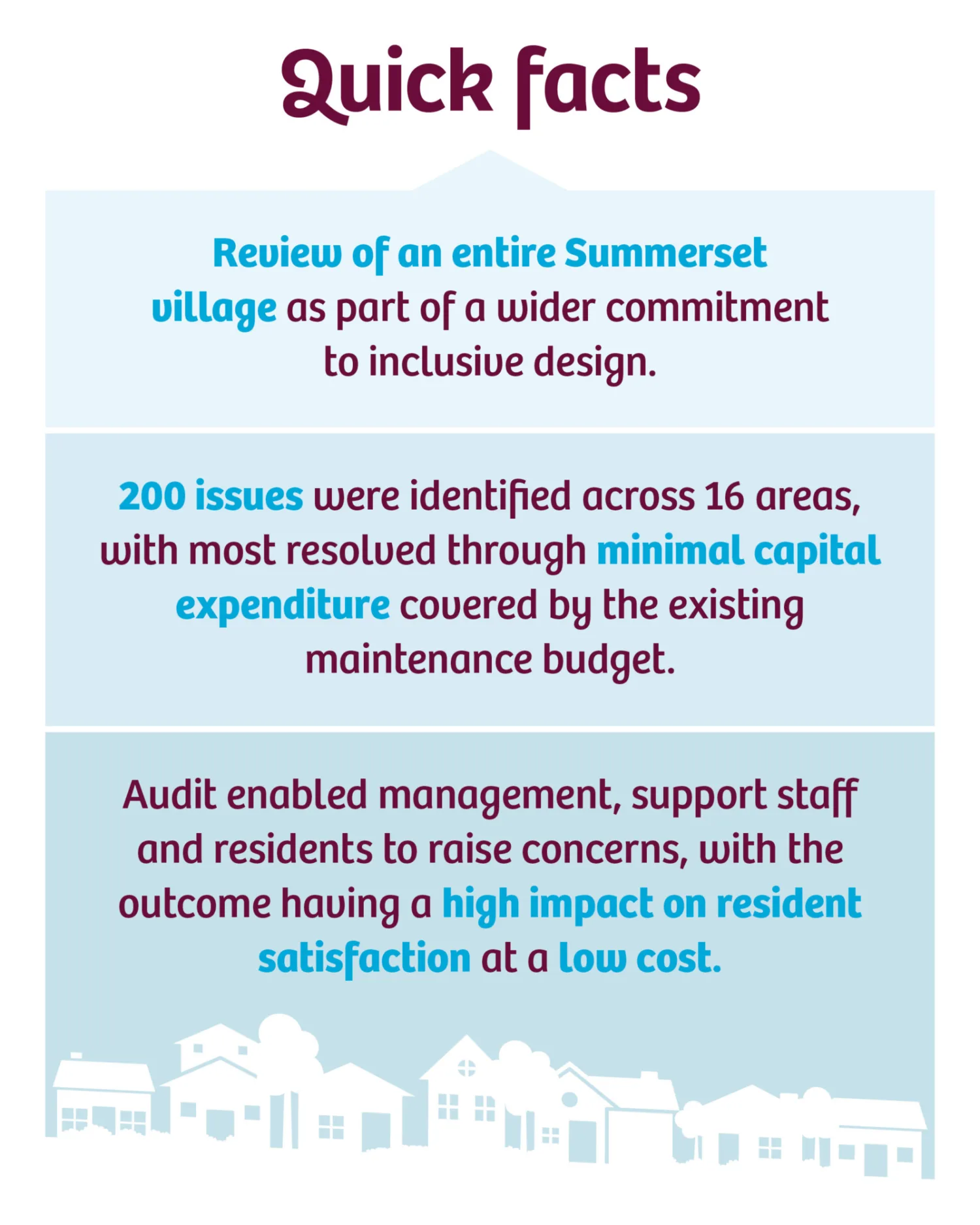Case Study: Retiring to a Better Place
Case Study: Retiring to a Better Place

Background
In 1997 the first of nearly 30 Summerset retirement villages opened offering independent living and aged care support to now over 5,000 residents across New Zealand.
The Lifemark team became involved with Summerset in 2009 by offering design advice and then reviewing plans of individual units until Summerset requested a wider scope to evaluate entire villages from an accessibility perspective. This would require a different approach.
Actions
The purpose of the village assessment was to physically visit every summerset village and conduct an onsite accessibility review.
Work commenced in 2016 and continues through to today demonstrating a strong commitment by Summerset to achieve excellence in the delivery of a universally designed built environment.
Each review looked at 5 key areas, namely (1) moving around including vertical and horizontal circulation, egress and exist options and the ability to move freely around the village; (2) Reception areas including access, parking and public bathroom facilities; (3) Facilities including dining areas, recreational centres, recreational facilities such as bowling greens and pools, and common areas; (4) Access to individual units; (5) safety including lighting, surfaces and signage.
The issues are then scored as either major, moderate or minor and to be addressed either immediately or within the next 12 months as part of planned maintenance.

Challenges
- Accepting the review of an entire village as part of a wider commitment to inclusive design.
- Responding to major issues that were above the building code but had a significant impact on comfort and safety.
- Being open to a different type of feedback that contained pictures and suggestions for improvement
- Deploying the finds into new processes and design practices.
Results
- Over 200 issues were identified across 16 areas.
- Issues ranged from 7 per site to over 30
- The audit enabled property management and other support staff the opportunity to anonymously communicate improvement ideas and concerns.
- The audit was also visible to residents who were also able to communicate areas of concern and to engage with an on-site accessibility expert.
- The majority of issues were resolved through minor capital expenditure contained within the existing maintenance budget
ROI
- Low cost / high impact on resident satisfaction
- Audit reinforced the goal of excellence amongst local management
- Audit provided management a feedback process to evaluate the effectiveness of construction protocols.
- Effective way to evaluate an as built product through the lens of an experienced universal design assessor specialising in disability and ageing.
(ROI = social value per person * people meaningfully effected / Total cost to deliver)


